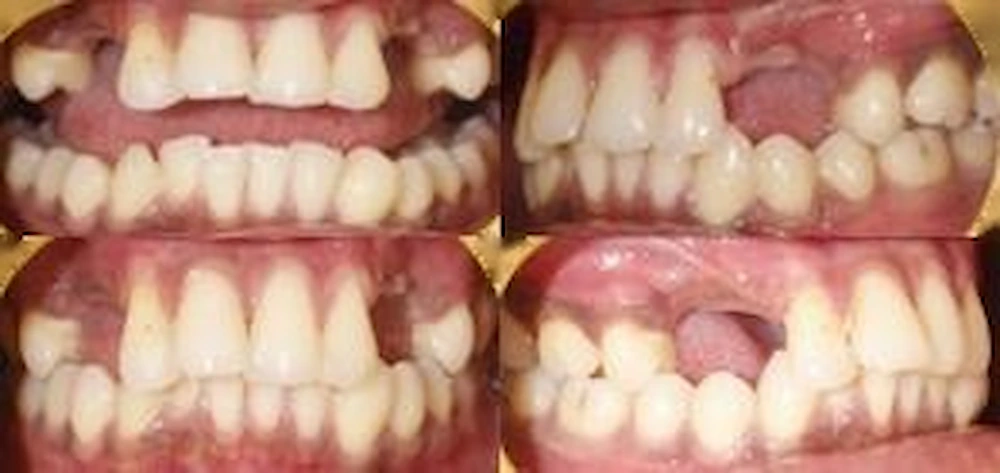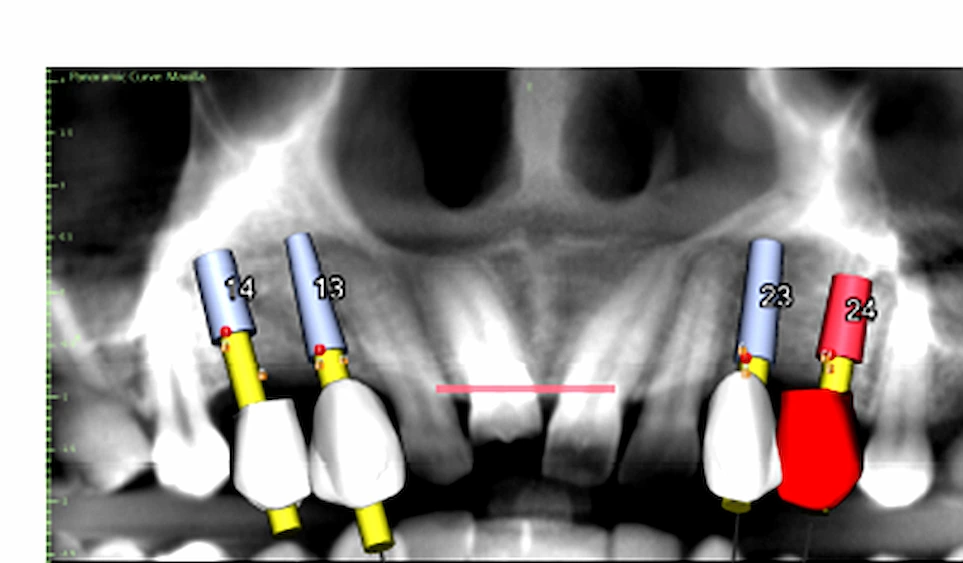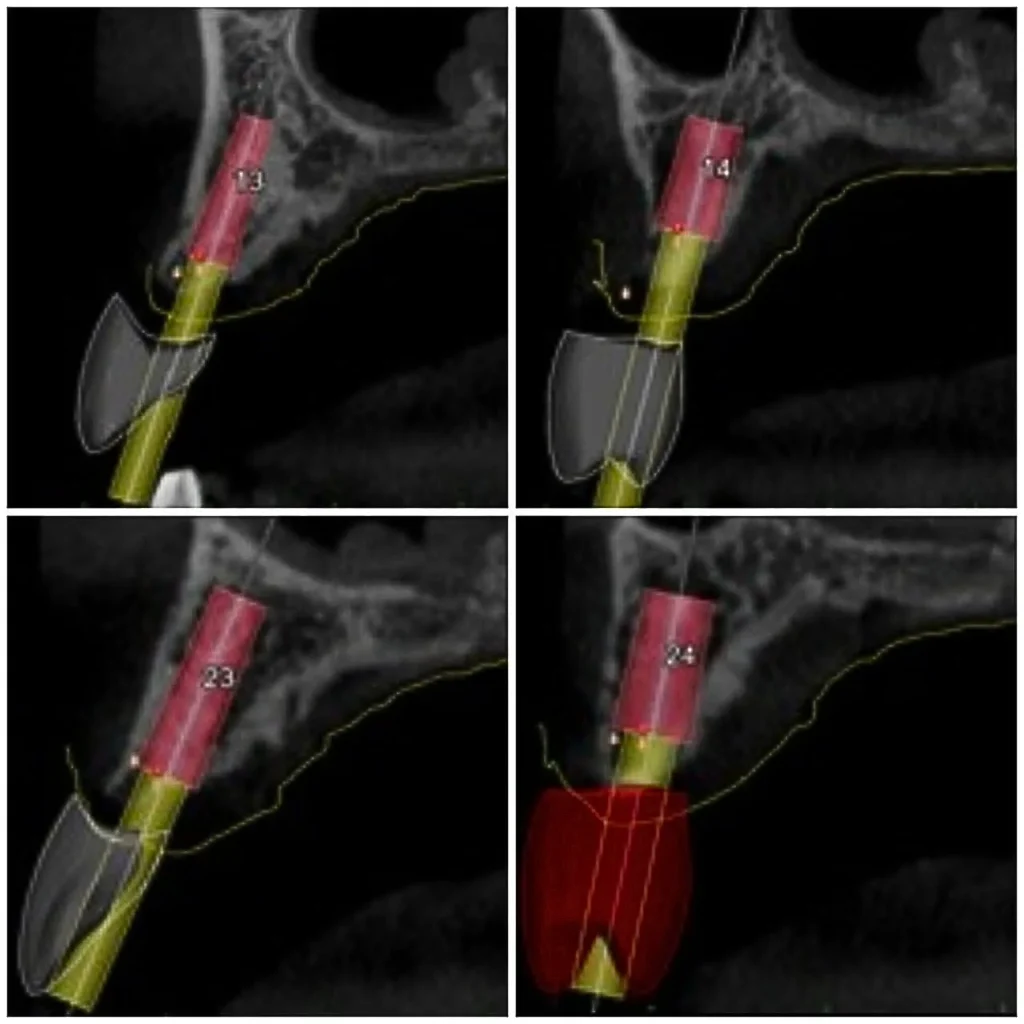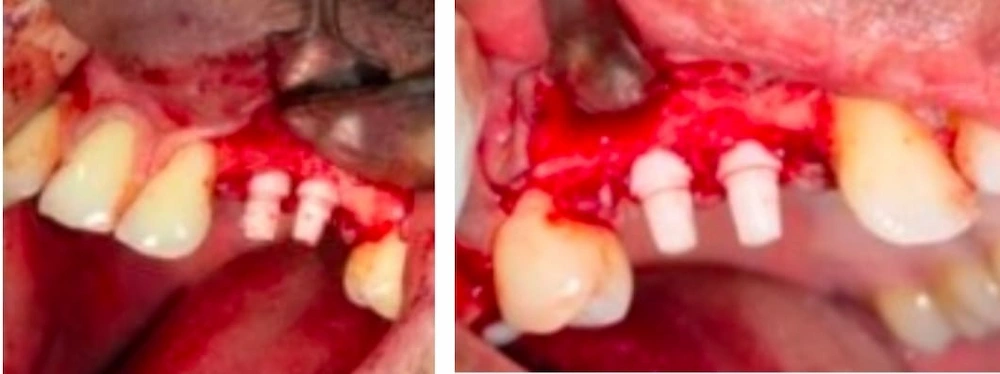Patient Details
A 29 year old male patient reported to the clinic for missing and orthodontic correction.
Clinical Examination & Initial Management
Initial intraoral examination revealed the need for oral prophylaxis, which was performed through thorough scaling to ensure an optimal oral environment for implant placement.

Counselling & Treatment Planning
The patient was counselled on the staged approach for rehabilitation, which includes:
- Completion of implant and prosthesis phase ensuring functional and aesthetic restoration.
- Implant 3D planning and stereolithographic model has been fabricated
| Implant/Tooth Number | Implant Part Number | Implant Diameter (mm) | Implant Height (mm) | Drill Type | Metal Cylinder Part Number | Drill Depth (mm) | Angle (°) |
| 13 | – | 4.0 | 12 | – | – | 21 | 23.51 |
| 14 | – | 4.5 | 8 | – | – | 17 | 21.16 |
| 23 | – | 4.0 | 12 | – | – | 21 | 23.29 |
| 24 | – | 4.5 | 8 | – | – | 15 | 15.16 |



Surgical Phase
Following adequate preoperative assessment and planning, Nobel zirconia implants were placed in relation to teeth 13, 14, 23, and 24. Implant placement was carried out under strict aseptic conditions.
- Insertion Torque: Implants at 13 and 14 achieved an accumulated torque of 45 Ncm, indicating good primary stability.

- Orthodontic correction: planned using clear aligners following the prosthetic phase.
| Implant/Tooth Number | Abutment Diameter (mm) | Abutment Height (mm) | Part ID | Angle (°) |
| 13 | 3.00 | 20.00 | – | 0 |
| 14 | 3.00 | 20.00 | – | 0 |
| 23 | 3.00 | 15.00 | – | -1.57 |
| 24 | 3.00 | 15.00 | – | 0 |
Operative Instructions
The patient was advised on postoperative care, oral hygiene maintenance, and the importance of follow-up visits for the sequential completion of treatment phases.
Discussion
The use of zirconia implants in this case provides a metal-free alternative with favourable aesthetic outcomes, particularly in anterior maxillary regions. The achieved torque values reflect adequate primary stability, which is crucial for osseointegration. A staged approach—implant rehabilitation followed by orthodontic alignment—ensures both functional occlusion and improved aesthetics.

